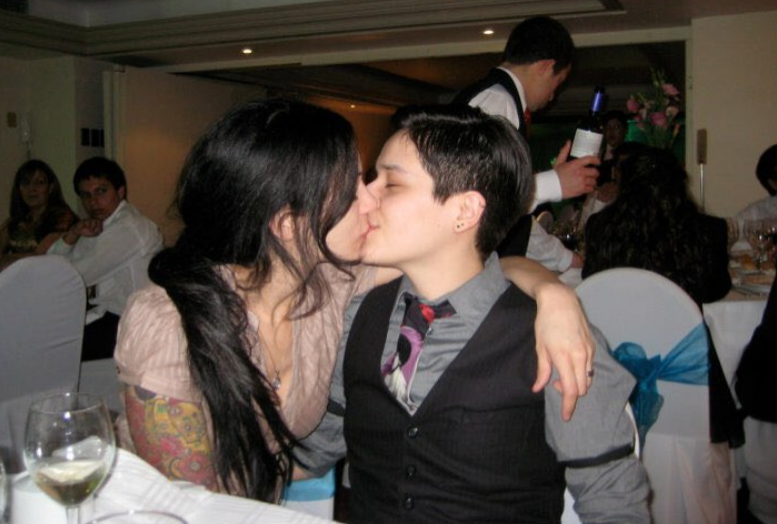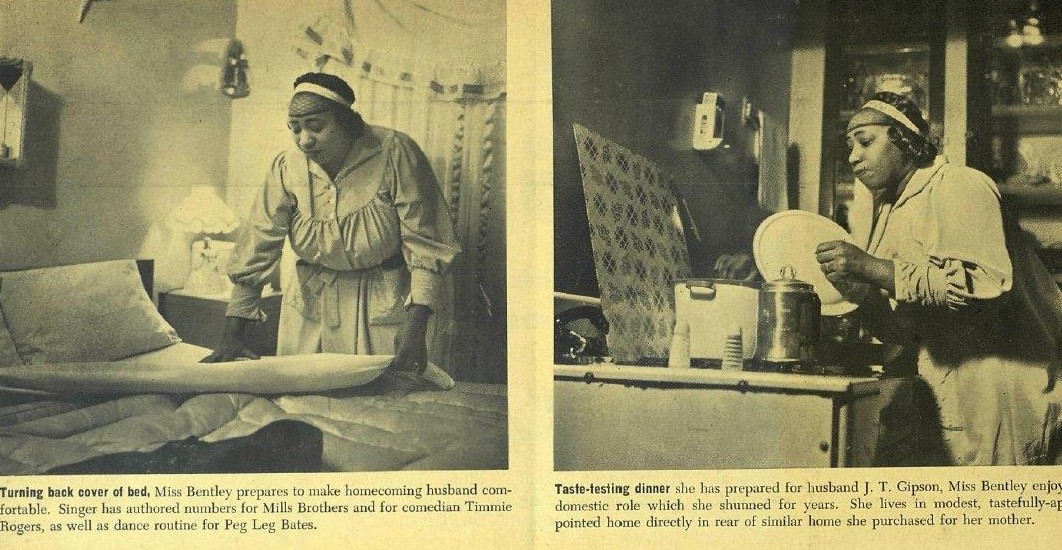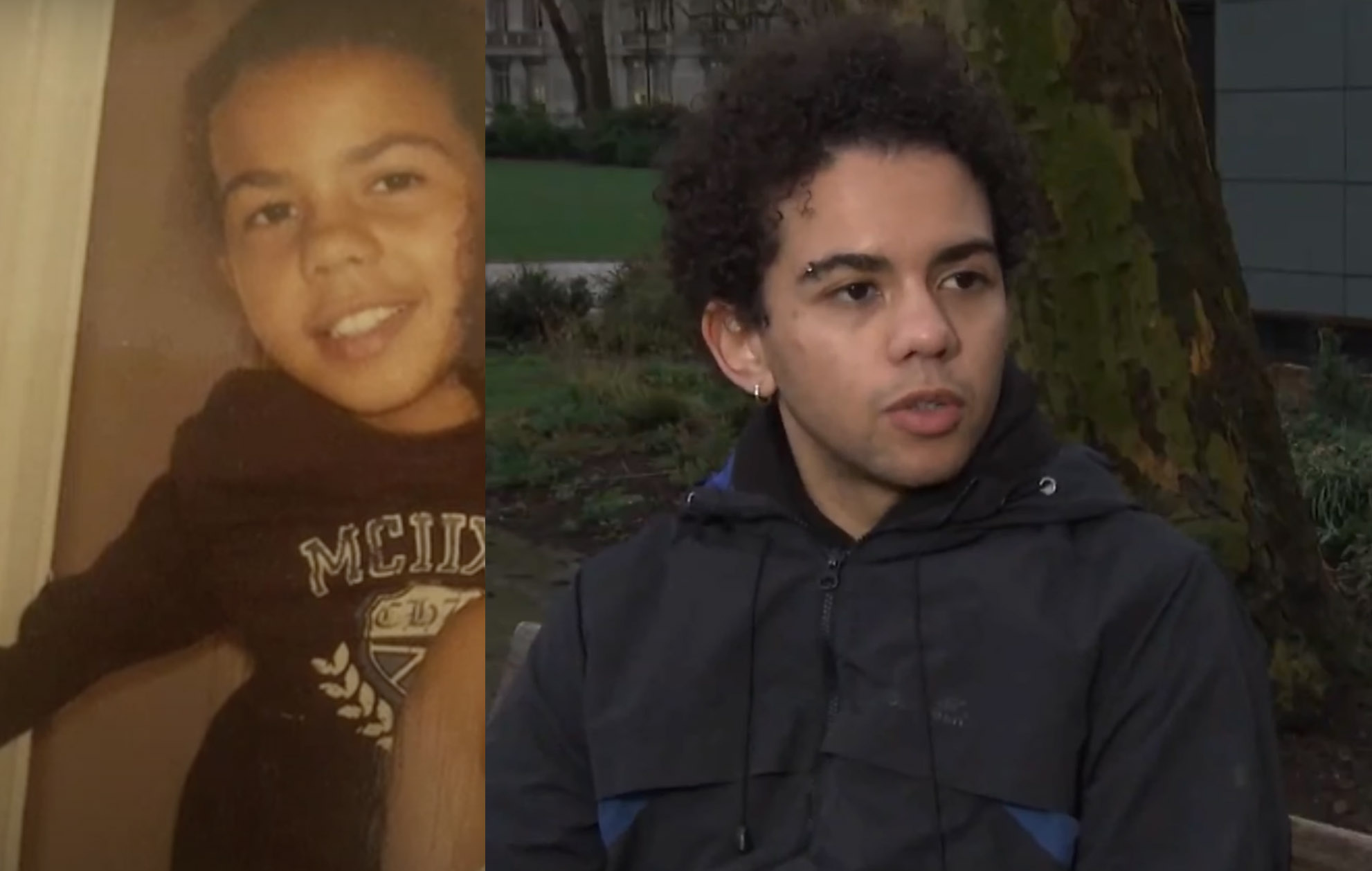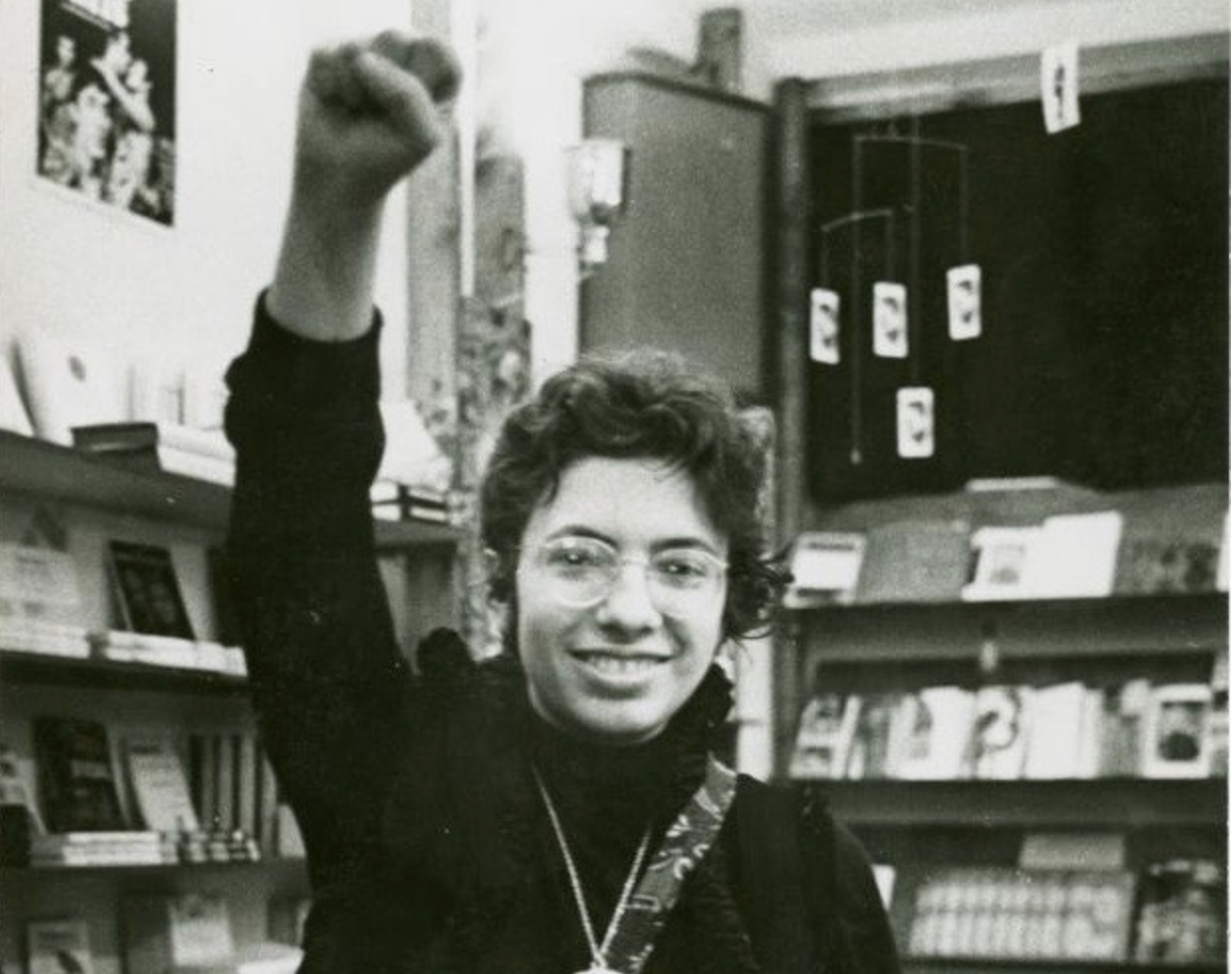In the 1920’s, Gladys Bentley moved to NY, at age 16. During the Harlem Renaissance, she landed a job performing at a venue that was only looking to hire men, and she quickly became a well-known performer. She performed as an out lesbian, wearing her signature tux, impressing her audience with provocative lyrics. But then later, in 1952, Bentley claimed she was cured by gay conversion therapy, in an article she wrote for Ebony, titled “I Am A Woman Again.” The takeaway: Lesbians are on the outskirts of womanhood . . . A point now eerily echoed by the revisionists who have been rewriting lesbian history.
In 2019, Giovanni Russonello wrote an article for The New York Times “Overlooked” obituary series. Russonello writes, “. . . Bentley was the first prominent performer of her era to embrace a trans identity . . .”
Gladys Bentley is among an ever-growing list of historical lesbian figures being revised postmortem . . . If defying sexist ‘norms’ means we can be recategorized after we die, who among us won’t be up for revision? Because it’s 2019, and we still live in a world that promotes the idea that there’s a right and a wrong way to be female . . . And lesbians are kind of notorious for not conforming to the sexist roles and stereotypes expected of women.
“By the early 1930s, Bentley was Harlem’s most famous lesbian figure — a significant distinction, given that gay, lesbian and gender-defying writers and performers were flourishing during the Harlem Renaissance. For a time, she was among the best-known black entertainers in the United States.” — Russonello, The New York Times
While Russonello does an okay job capturing Bentley’s life in words, he does her, and the lesbian community, a major disservice by inserting his own speculations into her obituary, in order to bolster a false narrative . . . He even, quite randomly, implies that Bentley may have used male ‘pronouns.’
“Throughout her life, Bentley used female pronouns to describe herself — at least in public.” — Russonello, The New York Times
Gladys Bentley may, or may not, have drank Chamomile tea at home before going to bed . . . I’m not sure. But chamomile is all the rage right now, so I’m just putting it out there.
We all know that Bentley went by female ‘pronouns,’ obviously, but even if she didn’t, that doesn’t mean anything about her ‘identity.’ Historically, lesbians may have used male ‘pronouns’ for several reasons—not least of which, safety and survival. But it was also done playfully among performance artists and gay people in general (within our own communities). It certainly didn’t mean what it does now, and to pretend it did, is disingenuous.
Revisionists could have a field day recreating my identity. I ran a show that showcased drag, I’ve done drag, and my nickname is Romeo. I’ve been known to strap on a tie and play the role of “best man,” and it’s no secret that I answer to “bro” and “dude”. . . and that’s the very least of my ‘gender’ defiant offenses.

It’s 2019, and rather than moving away from the “she’s really a man” trope that’s been obsessively maintained by the male-dominated media forever, we’re still stuck here.
With the endless expansion of the “LGBTQ” acronym, lesbians are no longer a defended minority. Instead we’ve fast become a minority that needs defending (from the very organizations that were once set up to protect us). We’re not only outnumbered, we’re consistently overruled by the majority.

From early childhood, Gladys Bentley refused to adhere to so-called norms. Her mother took her to doctors to try and ‘fix’ her. As an adult she continued to bend the rules. Persecution followed Bentley, eventually leading her to conversion therapy later in life. Not much has changed, the scars just look different now.
In 2019, lesbians are still being groomed to believe we’re (as Hannah Gadsby recently put it) “incorrectly female.” It doesn’t matter to revisionist vampires, that lesbians have been fighting against sexist ‘norms’ for decades, or that they’re promoting these revisions at our expense.
In her 1952 essay, Bentley writes, “When my two brothers were born, I began to hate them as we grew up. I suppose the reason was that they were admired while I was scorned . . . At the age of nine and ten, I stole their suits and wore them to school. I think I began wearing their clothes feeling that I was getting even with them, but soon I began to feel more comfortable in boys clothes than in dresses.”
Being crammed into a ruffled frock isn’t exactly every girl’s cup of tea. Baby dykes will often quickly learn that we want the stuff that comes with the suit: Girls, freedom, comfort. We start rebelling against the ‘norms,’ long before we even understand what it is we’re rebelling against, or why.
Bentley’s mother, Mary Bentley, was known to have an aversion to female children, and wished Bentley was a boy. She sought the help of doctors because her daughter wore the ‘wrong’ clothes and was enamored with her female teacher. As a grown woman, the world still saw Bentley as something that needed to be repaired.

Once ‘cured,’ Bentley explains that being a woman means you must fit the male desire—’feminine,’ domesticated, and ‘correct’ in your sexual attractions. How is current mainstream saying anything different as they flip through what few pages lesbians have in the his-story books, with a red pen?
In a photo showing Bentley preparing her husband’s dinner, the caption reads, “Miss Bentley enjoys [the] domestic role which she shunned for years.” Revisionists can’t seem to put two and two together . . . By othering lesbians, they’re perpetuating regressive ideas around the qualifications of womanhood.

Lesbians are quite possibly the biggest threat out there when it comes to fragile masculinity. There’s certainly been a long-held obsession with brainwashing one generation after the next, to get us to believe that there’s something less female about us if we divert from the so-called norms.
Are we meant to stay in line? Are we meant to buy into the man-made box of ‘gender’ stereotypes and roles divvied out to us based on sex? I suppose the message here is: We must . . . lest we be rebranded after we’re gone.
Cue Bentley belting out a question from beyond the grave: “What made you men folk treat us women like you do?”
The answer: Sexism. Lesbophobia. Fragility. And these things aren’t exclusive to men either. We’re all so thoroughly brainwashed, from the time we first arrive screaming into the world, that it can take decades to unlearn the misogyny we’re taught. So thoroughly brainwashed, that we’re lucky if we can ever see the brainwashing for what it is: Grooming.
We’re taught that female is synonymous with ‘feminine’ before we even learn to crawl. If by some miracle we’re born into a home where compulsory ‘femininity’ isn’t enforced, we’re smacked in the face with it every time we go out into social situations.
We’re taught that all girls are supposed to be innately drawn to things deemed ‘feminine.’ We’re taught ‘feminine,’ means ‘submissive.’ If we don’t comply, we’re corrected, even as babies . . . And if we don’t correct it, we’re quickly made to understand that we are ‘incorrectly female.’ And if we’re not feminine, ‘call the specialist, something must be wrong!’
When Bentley was a child, they called the specialists. Had she grown up today, that trip to the specialist would’ve taken a whole other path.
In her 1952 Ebony essay, a grown-up Bentley explains that she’s been treated and cured with hormones. She’s a “woman again.” She explains that being a woman means you must cater to the male desire. Essentially saying that if your appearance isn’t appealing to men, if you don’t center making others feel more comfortable, you’re not doing it right.
A force to be reckoned with, Bentley signed with Okeh Recording company in 1928. She made eight singles in a year. In 1931, Bentley even held a public wedding, in which she married another woman. She didn’t do female ‘right,’ and the world never stopped reminding her.
In 1933, she was sued, taken to the Supreme Court, for trying to take her act to Broadway. The venue that built it’s name around Bentley, wanted to claim ownership over her music, to prohibit her from performing on Broadway. But if the intention was to keep her down, the lawsuit was unnecessary, the world was already taking care of that. Bentley received so many complaints while performing on Broadway, the police would lock the doors of the venues where she’d perform.
In her life, Gladys Bentley had to endure racism, sexism and lesbophobia. Even after death, she’s still being measured through a racist, sexist, homophobic lens. That lens seeks to be the highest power, to control our thoughts and distort our reality. To teach us what’s acceptable, and what’s not. In everything around us from billboards, to screens, we’re taught to take part in our own self-hatred.
In her Ebony article, Bentley gives us such an eloquent glimpse into the lesbian perspective, that it makes me wonder (as many others have), if Bentley actually did undergo ‘gay conversion therapy,’ or if it was all just a front.
She writes, “Some of us wear the symbols and badges of our non-conformity. Others, seeking to avoid the censure of society, hide behind respectable fronts, haunted always by the fear of exposure and ostracism. Society shuns us. The unscrupulous exploit us. Very few people can understand us. In fact a great number of us do not understand ourselves.“
After moving to California—where she was billed “America’s Greatest Sepia Piano Player” and the “Brown Bomber of Sophisticated Songs”—changes in federal law enforced ‘femininity’ in women. Bentley was forced to carry a special permit in order to wear ‘men’s clothing.’ All things considered, the speculation that her conversion was all an act, makes perfect sense—Bentley needed to make a living, and the 50s saw a major regression from some of the freedoms lesbians had experienced in the 20s.
Gladys Bentley formally announced her marriage to a man, and then announced her marriage to another man in 1952, five months after her first husband died (although there’s been speculation that she never married a man at all).
After Bentley claimed to have been cured by taking female hormones—after marrying a man, changing her style, announcing she was ‘normal’ and ‘domesticated’—she was able to get her singing career back on track.
When it comes to lesbians, it seems as though only compliance, by way of conformity, can ever truly prove to society that we are correctly female. The lines keep shifting, and the bounds of womanhood, though we’ve fought and fought against it, are constantly being determined for us . . . Even after we’re dead.
On January 8, 1960, at age 52, Gladys Bentley died of pneumonia in her Los Angeles home. The same regressive ideas that pushed her over the edge while she was alive, are now being used to revise her story, long after her death.
Bentley “embraced” a lesbian “identity.” She was never more correctly female than while she was rocking a tux . . . Because her swagger and style came as naturally to her, as her attraction to women. Bentley never needed correcting. In fact, the only thing that’s ever needed correcting, is the persisting and absurd idea, that there’s a wrong way to be female.
جوليا ديانا — Julia Diana Robertson, is an award-winning author, and a contributor for Huffington Post and AfterEllen—A first generation Arab-American, who grew up between worlds, and currently resides somewhere in the middle with a bird’s eye view.





